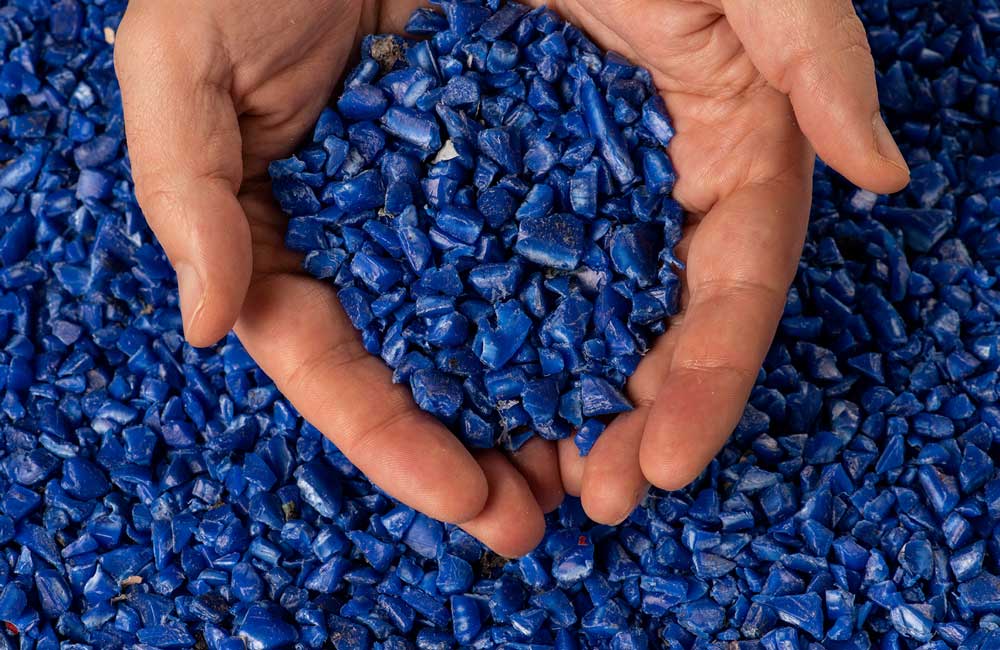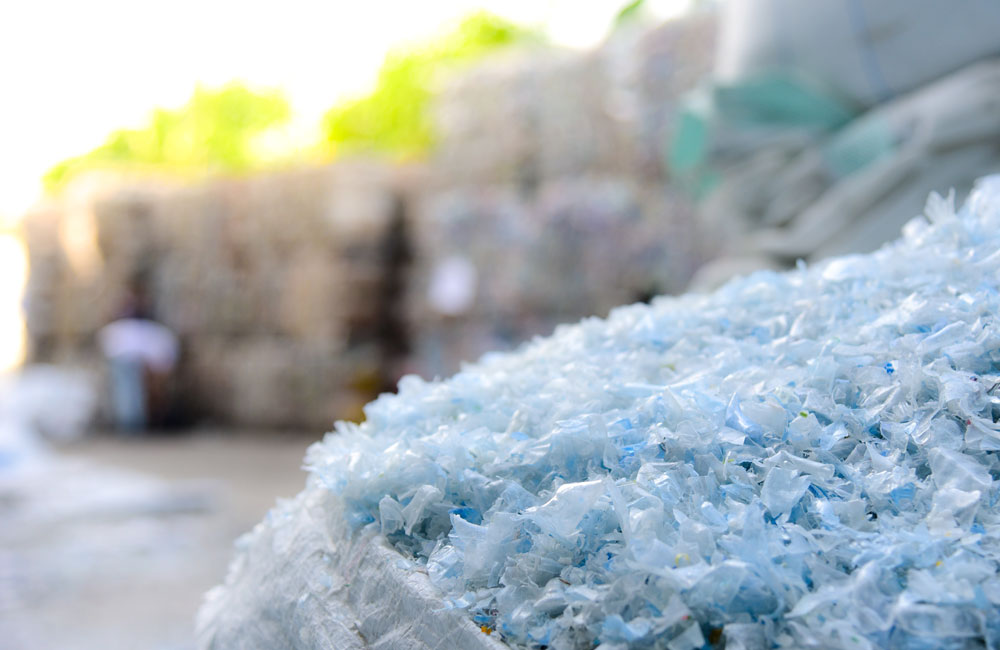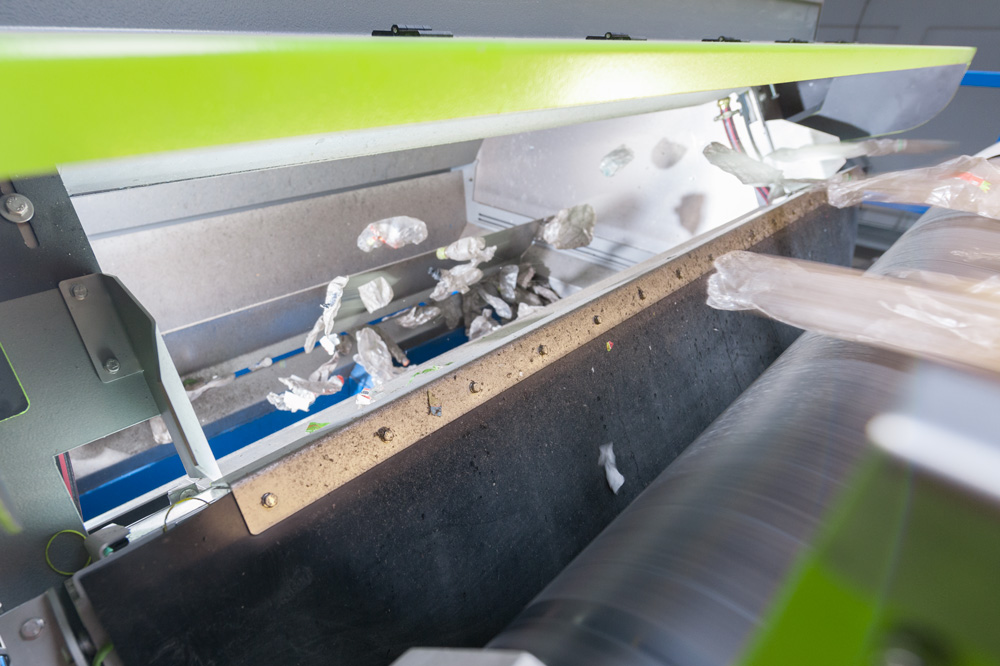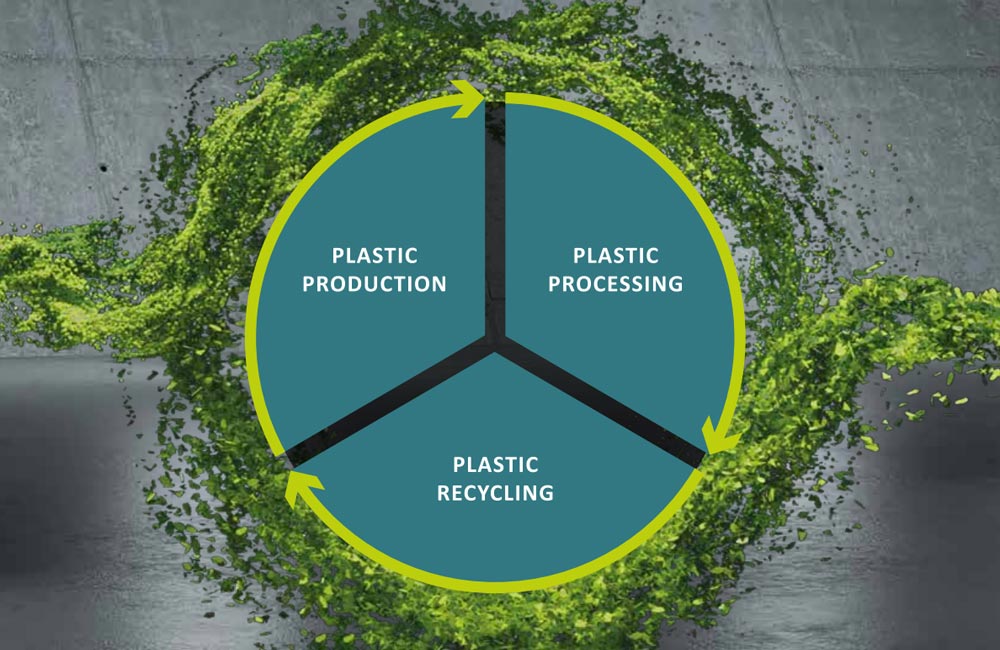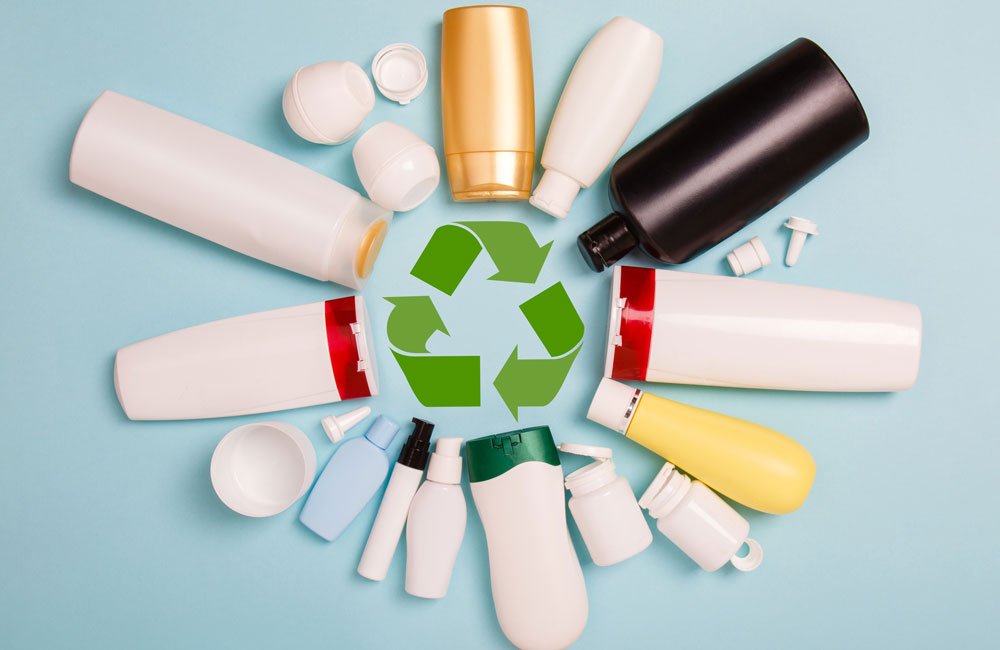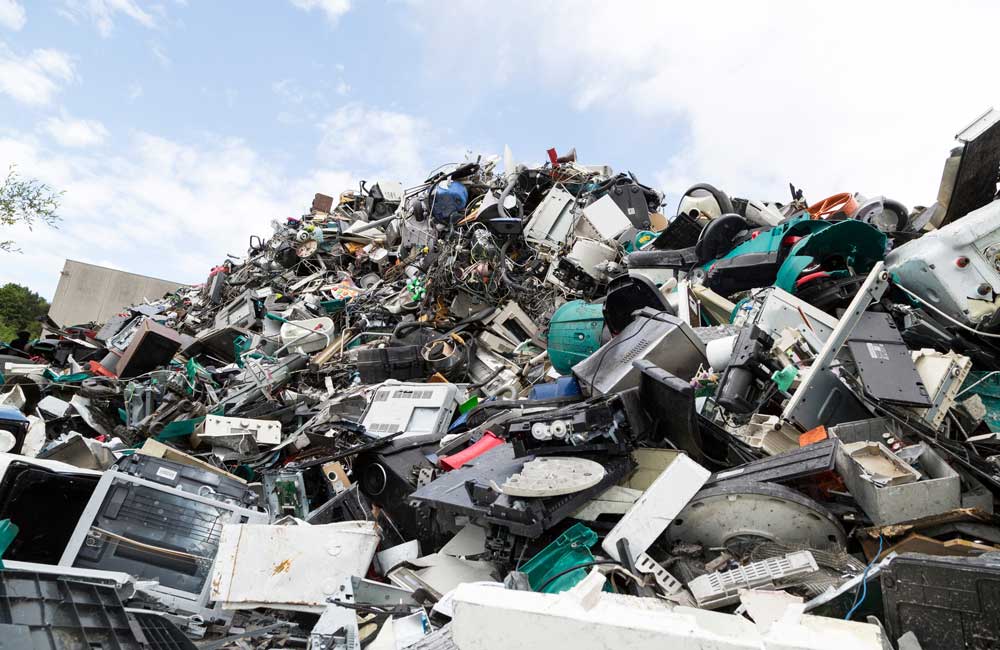Circular Economy
02/08/2022 |
The recycling of hollow glass
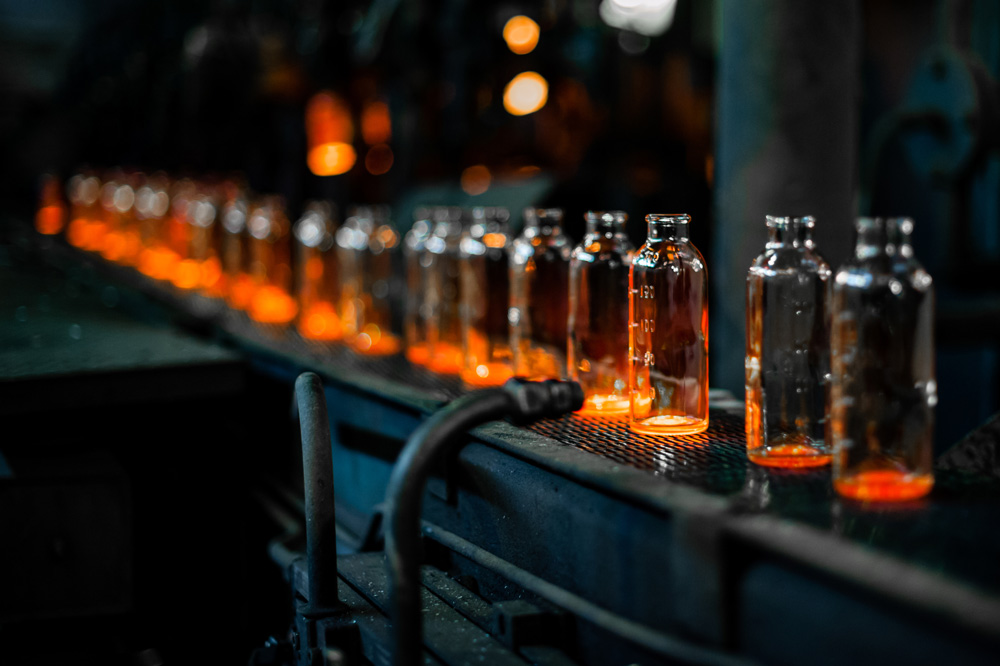
What is hollow glass?
The term hollow glass covers various types: Hollow construction glass (such as glass building blocks), commercial glass (glassware and drinking glasses for the household, table and kitchen) and - for packaging - container glass and glass bottles. The latter are well suited for filling due to their three-dimensional shape with an opening. At the same time, this opening can be securely closed for packaging purposes. This optimally protects liquids and bulk or filled goods from external influences. The glass does not develop any interactions with the packaged goods, it always remains neutral in taste and retains its shape even at high temperatures.
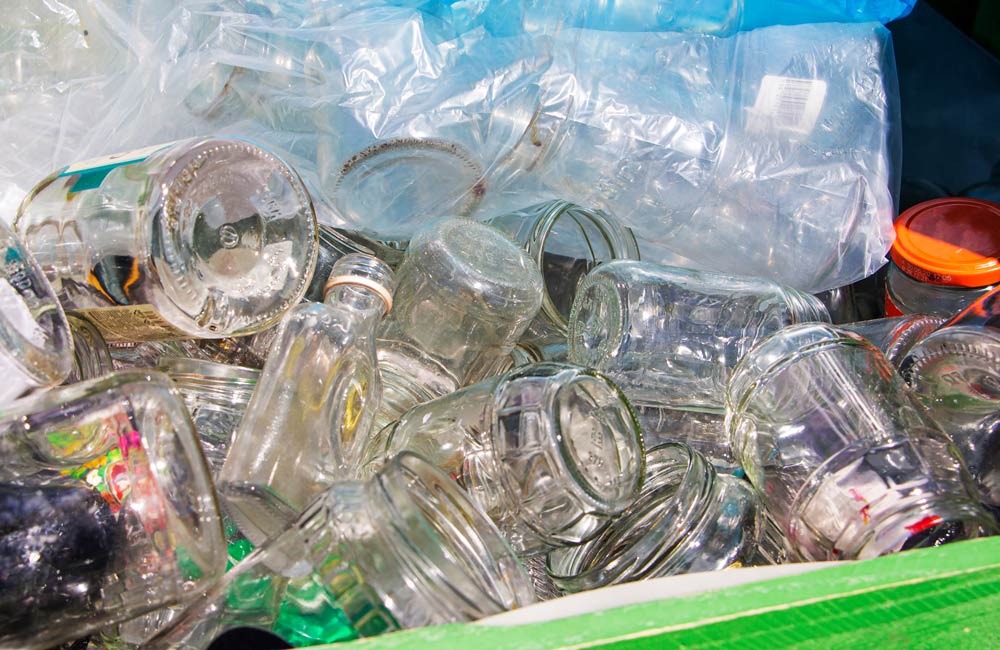
Hollow glass as a packaging solution has various advantages. Not only is there a wide range of shapes and applications, but pure glass can also be remelted as often as required without any loss of quality and is therefore almost 100% recyclable. Even single-use glass is thus environmentally friendly and, as used glass, an important part of the value chain. Reusable glass, such as yogurt jars or beverage bottles, further improves the eco-balance. Since glass does not absorb any foreign odors or substances, it can be refilled with changing liquids without any problems.
The recyclability of hollow glass
Hardly any other packaging material is as suitable for multiple use as waste glass. It can be returned to the melting process as often as required and processed into new products - while maintaining the same quality. As reusable bottles, glass containers can also go through up to 50 cleaning and refilling cycles thanks to their smooth and chemically unaffected surface before they are fed into the recycling loop. This means that more than twice as many refilling cycles are possible for refillable glass bottles compared to refillable PET bottles before the bottle has to be recycled again.
Waste glass is now the most important raw material component in the container glass industry. However, its use depends on the production-specific requirements for the purity of the cullet. For example, colored glass cannot be used for the production of white glass. In order to produce white container glass again at reasonable cullet usage rates, a color purity of 99.5% or higher is usually required. The tolerated percentage of off-colors in brown glass is usually about 10%. Only green glass allows a significantly higher percentage of off-color.
The recycling of hollow glass
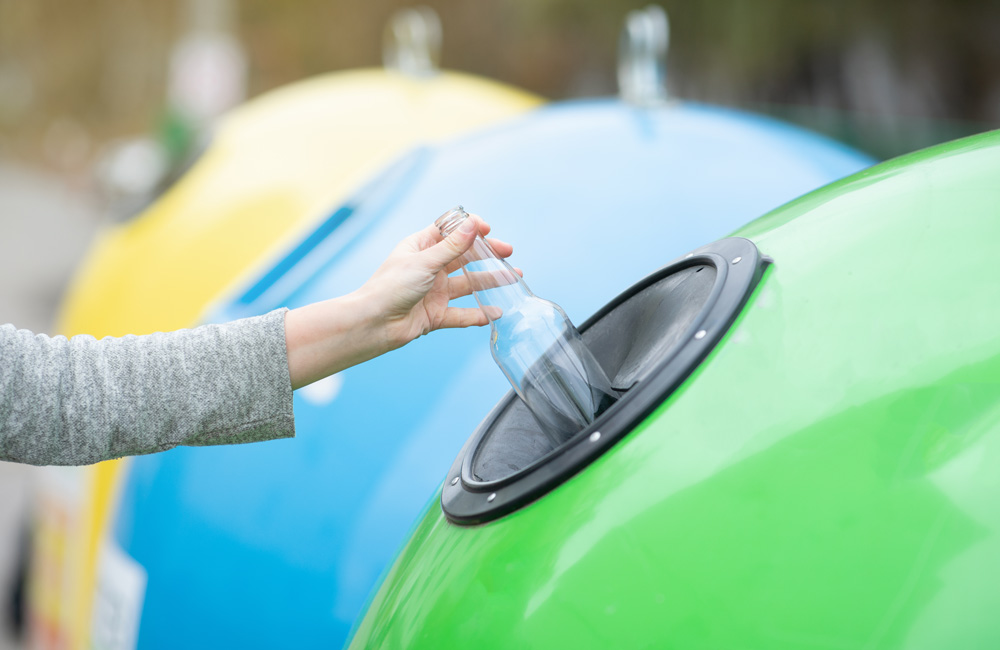
As early as the beginning of the 1970s, the first material cycles for used glass were initiated in Germany. Enormous efforts by glassworks and waste glass processors to promote glass recycling led to ever higher recycling rates. Today, around 2 million tons of used glass are collected in Germany every year and processed into new glass containers. Although the processing of the collected container glass is largely fully automated and automated color sorting is already standard in many recycling plants, for economic and ecological reasons it is still recommended that consumers collect the glass containers separately according to color. The purity of the collected glass is a basic prerequisite for its return to the melting process for the production of new glass containers. More than 250,000 used glass containers for the separate collection of white, brown and green glass are in use throughout Germany for this purpose. And with success: according to waste statistics, the recycling rate for container glass placed on the market was 84.1% in 2019.
Although waste glass has excellent recyclability, its processing is time-consuming and cost-intensive. The collected material must be cleaned of all non-glass components and off-colors must be sorted out. First, coarse waste (coarse garbage, plastic bags, ceramic parts, stones, etc.) is sorted out by hand. Light materials such as labels, plastic rings, caps, etc. are removed by suction, and metals are removed by magnetic separation, eddy current separators, and special Fe/Ne metal separators. State-of-the-art high-tech sorting equipment is available for further separation of impurities such as CSP (ceramics, stones, porcelain), heat-resistant glasses or lead glass. It is important for the melt that almost one hundred percent of the highly problematic impurities such as metal, CSP or heat-resistant glasses are separated, otherwise inclusions in the product or disruptions in production may occur.
At the end of the complex sorting and cleaning process, the glass cullet is at best ready for the melting furnace, which is in no way inferior in quality to the original raw materials for container glass production and also has the decisive advantage of requiring significantly less melting energy.
The advantages of hollow glass recycling
In addition to a considerable reduction in the amount of waste, the recycling of hollow glass brings with it a whole series of advantages:
Reduced
need for primary raw materials
The
use of used glass packaging reduces the need for primary raw materials. In the
past, a glass bottle consisted mainly of quartz sand. Now, thanks to the
recycling of cullet, the proportion in production is in some cases only 10%. In
2011, more than 12 million tons of raw materials (quartz sand, soda ash, lime)
were saved in Europe through glass recycling alone.
Reducing
energy consumption and improving the ecological balance sheet
Used
glass packaging requires lower temperatures and consequently less energy to
melt than the mixture of primary raw materials (quartz sand, lime and soda
ash). According to a rule of thumb, for every 10% of waste glass added to the
melting furnace, about 2 to 3% energy is saved. This automatically results in a
reduction in CO2 emissions.
Overall, around 74 percent of all glass bottles end up in used glass containers in Europe every year - and are reprocessed into high-quality glass packaging.
Rising
demand for glass packaging
The question of environmental compatibility and
recyclability now plays a major role in purchasing decisions. Glass is an
extremely popular packaging material thanks to its high-quality and aesthetic
nature alone. Its recycling and reuse make it many times more attractive.
Recycling-friendly glass design
Like
plastic packaging, hollow glass containers must meet certain criteria to be
considered recyclable. The Stiftung Zentrale Stelle Verpackungsregister
summarizes these criteria as follows: Recyclable glass is transparent, and the
label is easy to remove. Glass as a packaging material is primarily
characterized by its transparency. The contents are visible. It is imperative
that this property be retained in recycling.
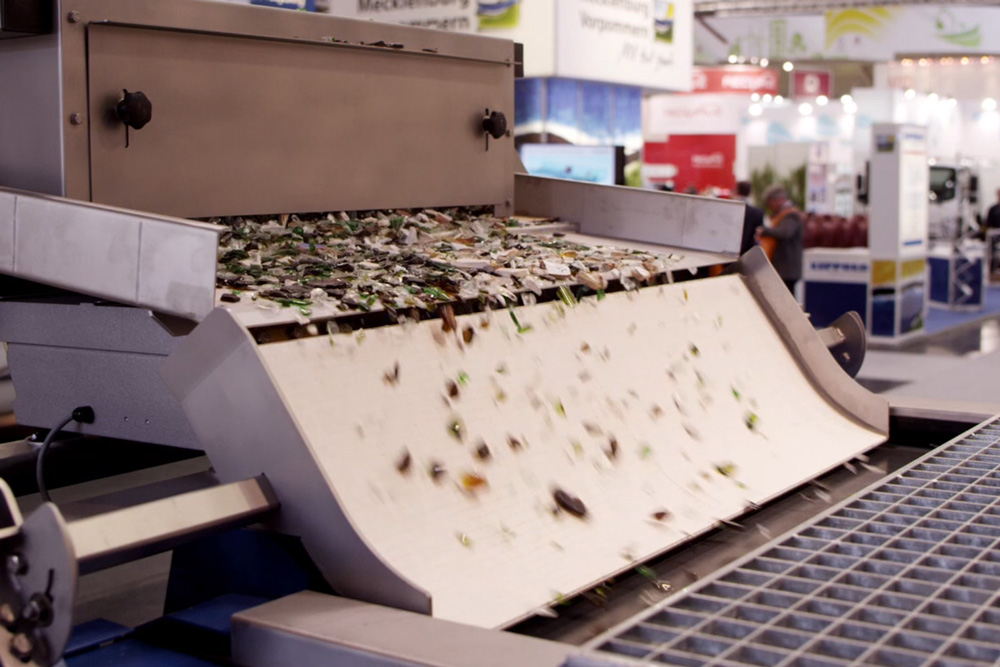
In many cases, opaque glass pieces are automatically recognized as contaminants by optical sorting systems and rejected. Painted glass containers, for example, can also be lost to the glass cycle, as they are often not transparent or convey a "wrong" color due to their paint finish and are consequently rejected in many systems. Also, any "non-glass components" of the glass packaging, such as labels, must be as easily removable as possible. It therefore makes sense for glass design to use as few fully adhered labels as possible. If adherent labels cannot be adequately removed during the process, the glass will be opaque at that point and will also be rejected.
Conclusion
Hollow glass is an excellent example of a closed material cycle. It can be recycled as often as desired without any loss of quality if collected and processed appropriately, and it also saves raw materials and energy in the process. For this reason, it is becoming increasingly popular as a packaging material among both manufacturers and consumers. However, there are some basic prerequisites for successful waste glass recycling: First, the glass containers must be designed in a way that is suitable for recycling. Second, consumers must dispose of used glass properly - separated by color and glass type. And thirdly, ultra-modern sorting plants are required to produce glass fragments of the highest quality that can be remelted from the collected waste glass, which in turn are used to make new glass bottles.
